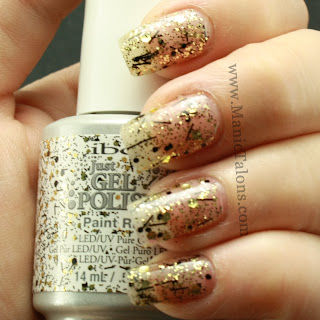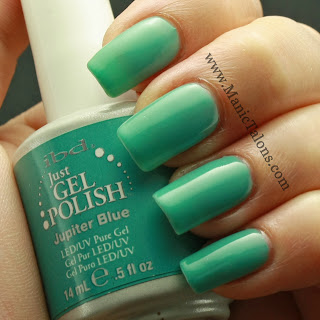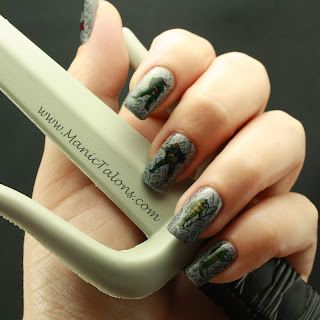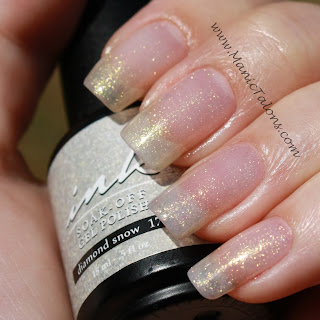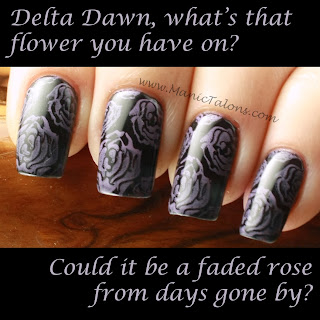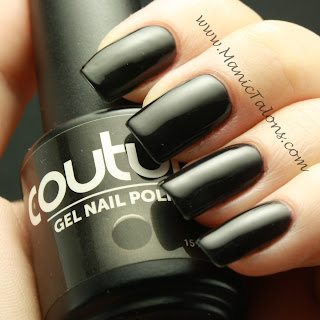It
seems that most people encounter one of two issues with Soak Off Gel.
Either it doesn’t bond to the nail and they experience premature
chipping and/or lifting, or it bonds so well that removal becomes a
nightmare. Thankfully, there
are tricks to combat both of these issues! I’ll tackle soak off issues
in another blog post. Today, let’s focus on preventing lifting and
chipping.
What causes lifting and chipping? If you have not completely removed the
cuticle from the nail, you are more likely to experience lifting. If
you have oily to normal nail beds, you are more likely to experience
lifting. If there are
flaws in your application process, you are more likely to experience
lifting. If you are using the wrong base gel for your nail type, you
are more likely to experience lifting. There are a lot of factors that
can lead to lifting and chipping.
Cuticle Removal
If
you haven’t been doing cuticle work, the cuticle can extend down the
nail plate, and it often blends into the nail so that you can’t really
tell it is there. When you apply gel polish over the cuticle, it
can’t bond and results in lifting. There is a common misconception
about where the cuticle is located on the nail. The cuticle is NOT the
skin around the base of the nail. That is the eponychium. The cuticle
is dead skin tissue that grows down onto the
nail. Rather than try to recreate the wheel and go into the “how to”
of cuticle removal, I’ll direct you to the pro. Check out this
FingerNailFixer Cuticule Work Video.
I prefer Sally Hansen Instant Cuticle Remover and a spoon style cuticle pusher.
Oily Nail Beds
Natural
oils on the nail will create bonding issues for any base gel. Most
systems come with a bottle of prep, cleanser or dehydrator that is
designed to remove oils from the nail. However, for those with oily
skin and nails, these products alone simply don’t get the job done. It
is crucial that you remove all oils from the nail before applying your
base gel. My secret weapon? A grease fighting dish detergent. Not one
of the formulas that has moisturizers built
in. Simply one of the original formulas that is made for dishes, not
hands. I use the classic blue Dawn. This is a trick I stumbled upon by
accident by doing a manicure shortly after washing dishes. It was the
first time I got more than a week of wear!
So now it has become a part of my manicure routine. After completing
my cuticle work and shaping my nails, I grab my Dawn dish detergent and a
nail brush and give my nails a quick wash and scrub to remove any
residual oil. Which reminds me, I need to pick up another bottle of Dawn.

You can also use an oil fighting
soap, but I have found most of those leave behind added moisturizers
that can interfere with the gel’s bond to the nail. Be sure to keep it
quick, though. You don’t want your nails to absorb too much moisture
from the wash. I scrub and rinse both hands
in less than 1 minute. Give your hands time to dry completely before
proceeding with your manicure, being careful not to touch your skin and
pick up additional oils. If you use this trick, be sure to moisturize well when you're finished with your manicure. If you've ever washed a sink full of dishes by hand, you know that dish detergent can cause dry skin.
Application
There are two
application mistakes that generally lead to lifting. Polish on the skin
around the nail and failure to properly cap the free edge of the nail.
1) Neat and tidy application isn’t
just about the look of the final result. When gel polish overlaps the
skin around the nail, it will cause lifting. Stop your polish just shy
of the skin around the nail. And if you mess up, clean
it up before you cure. I use a stiff
concealer brush and 91% isopropyl alcohol to clean up any mistakes before
curing.
The brush I prefer is the Elf Concealer Brush that can be found at Target for $1. Elf makes two concealer brushes. This white one, and a black one. I love the black one for pigment work, but it's not as good for clean up. This is what the white one looks like in the package:
You
can use any stiff, short bristled brush. You can also use the cleanser that came with your gel
starter kit instead of isopropyl alcohol, but the isopropyl alcohol is cheaper and works great. Just be sure you get 91% or higher. Dip your brush in the
alcohol, blot any excess on a lint-free wipe or paper towel, and
carefully run it along the edge of the nail near the skin. Be sure to
frequently wipe and redip the brush as you clean to avoid
spreading the polish around.
Clean up every coat of gel before you
cure. Base coat, color coats, and top coat.
2) You must cap the free edge of
the nail with every coat of gel you apply, from your base coat to your
color coats and finally your top coat. Think about how you use your
hands on a daily basis. When you have an itch, you scratch
with the free edge of your nail. When you turn a page in a book, the
free edge of your nail may drag along the page. When you pull on your
pants, the free edge rubs against the fabric. When you type, the free
edge of your nails may hit the keys. If you
stop the gel at the top of the free edge, all of the friction from day
to day life will peel the gel back. So cap that free edge with every
coat! When looking straight down on the tips of your nails, you should
not be able to see natural nail. I'm using Ink Glacier on top of my current mani to demonstrate in the following pictures.

By the way, there is NO way to take a flattering picture of the tips of your nails. Hello fat fingers!
I’ve had a few people ask how to
cap the free edge without getting polish all over the skin under the
nail. When you hear people say to “cap the free edge”, what they really
mean is apply gel to the very edge of the tip of the nail
so that it overflows very slightly onto the underside of the nail. If
you look at the underside of my nails, you will see approximately 1 mm
of polish overflow along the tip.
I always cap the free edge before
applying the gel to the surface of the nail rather than capping at the
end. This prevents pooling at the tip of the nail. Here’s how I do it:
- Wipe the brush against the
inside of the bottle neck to remove excess polish. Your brush should
not have a drop of polish at the end like you will when you polish the
surface of the nail. The bristles will hold enough to effectively
cap the tip when the polish has been wiped from both sides of the
brush. If you have just finished applying color to a previous nail, you
can use what is left on the brush to cap the next nail before you
reload the brush to polish the nail surface.
- Holding the brush perpendicular
to the tip of the nail, place the side of the brush on the outside
corner (for square nails) or outside edge (for round nails). Use the
side of the brush and run it along the tip from the edge to the
center. Repeat from the opposite corner/side of the nail. If you have shorter nails, use your thumb (or finger if you're polishing your thumb) to gently pull back the skin on the tip of the finger.
- Polish the top of the nail as usual.
- If you had too much polish on
the brush when you capped the nail, it may have pooled on the underside
or touched the skin. Use your clean up brush to take care of that
before you cure the layer.
Base Gel and Bonder
If you have tried the above tips
and are still seeing lifting or chipping, you may be using a base gel
that is not formulated for your nail type. Of the seven that I have
tried, I found that some work better for oily nails and some
work better for dry nails. For example, Gelish Foundation and Red
Carpet Manicure Structure Base Gel tend to work very well with oily
nails but will bond so well with dry nails that removal becomes
extremely difficult. Ink Base and Couture Base tend be more likely to lift
on oily nails but work very well with normal to dry nails. I personally use Kiss
Base Gel. It is the perfect balance of staying power and easy removal
for my nail type. So if you are still experiencing lifting after correcting
the issues I mentioned above, one option
is to try a different base.
Another option is to use a bonder.
Bonder is a thin liquid that is applied to the very tip and free edge
of the nail before applying your base gel. It leaves behind a sticky
layer that allows the gel to really grab the nail. There
are several bonders for soak off gel polish on the market, but this
becomes very tricky territory. For example, Gelish PH Bond is not a
bonder. It is a dehydrator and pH balancer. OPI BondAid is also a
dehydrator and pH balancer. Sensationail kits come
with “Gel Primer”. This is a bonder. FingerPaints Gel Polish
Chip-Free Bonder is also bonder. Then there are also products labeled
as bonders that are intended for use with hard gel or acrylics. Those
will make soak off difficult. See, confusing. So
be careful ordering a bonder online. I have personally used both the
Sensationail Gel Primer (available as part of the essentials kit at
several drugs stores and large retail stores) and Fingerpaints Chip-Free
Bonder (available at Sally Beauty Supply) with
great results.
I hope this helps!
~Michelle

